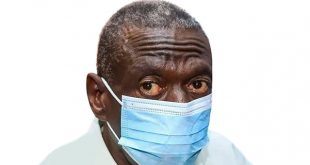
By Morris DC Komakech
Government policies and spending key to achieving an HIV-free generation
The debate about a prospective HIV-free generation given the advent of WHO Option B+ attracts attention. Further probing of the idea may expose it as a distant utopia. To have an HIV-free generation, our communities must come to a convergence on reducing new infections.
HIV/AIDS is a disease left to wreak havoc among the destitute of the world. The wealthy and educated are surviving the scourge longer. Their children are able to avoid contracting the disease when compared to the children from impoverished communities. This explains why the global burden of HIV/AIDS is most prevalent in underdeveloped countries like Uganda.
To think about a prospect of an HIV-free generation, we have to see the big picture of the structure of governance, the quality of public policies and the distribution of critical resources necessary to secure prerequisites of health. These forbearing conditions also shape how society places value on containing the HIV virus spread and caring for those living with the virus.
There is need for deliberate public health policy and unwavering fiscal commitment to this end. Unfortunately, our national spending priorities deprive the masses of critical social services needed to attain acceptable levels of health.
The recently passed HIV and AIDS Prevention Bill (2008) is an example of required policy instruments, which must be accompanied with equal funding commitment
The Ugandan government has demonstrated inability to meet most of the MDG goals including reduction of HIV infections. Scientists now agree that at its current pace, Uganda may not achieve some of the MDGs in critical areas such as reduction of new HIV infection, eliminating mother to child transmission of HIV, providing services to reduce child-maternal mortality by 2035.
Uganda is a signatory to the 2001 Abuja Declaration, which committed governments to allocate at least 15% of its annual budget on health services. Uganda has achieved barely 8% since 2007 while only Tanzania has achieved this objective. The ratio of healthcare workers to patients remains staggeringly low and yet the WHO Option B+ remains the most promising opportunity to the achievement of this goal.
It is impossible to effectively implement this HIV treatment regimen when government’s per capita heath expenditure is far below the minimum international threshold. An audit report in 2013 found that Uganda was spending only Shs2, 500 (US $1) a month on healthcare per person, which means it’s annual per capita health expenditure is about US$12. This is ridiculously below the 2001 Commission of Macroecomics and Health recommendation of US US$34 per capita.
The HIV treatment has three parts to it: the biomedical aspect, which includes treatment; the psychosocial aspect, which entails the social needs of persons living positively with HIV, and health promotion, which entails preventive strategies. Each of these aspects is complimentary to each other and yet requires specialised skills, commitments, resources, and funding.
The HIV-free generation, health promotion in the context of maternal child health, and HIV infection prevention are crucial. This is where our healthcare system is failing.
The 380 people who contract HIV on the daily basis in Uganda are among some of the poorest. They endure insurmountable challenges in accessing health information and live in economic production chains.
Opportunities for health promotion would mobilise distinctive and progressive cultural resources to enhance the quality, relevance, and efficacy of health promotion and the management of health to prevent new infections.
Without bringing in relevant cultural resources, communities will shun important services such as family planning. Social and societal discrimination remains amplified and more so where resources are scarce. Lastly and most importantly, is the understanding that to ensure an HIV-free generation, we have to ensure a reduction in new HIV infections. The WHO Option B+ is effective; however, certain cultural practices and beliefs are still retrogressive, oppressive, and predatory. These undermine opportunities for girls and women and make these two groups more vulnerable to HIV infection. Unless addressed, such conditions will continue to block progress towards achieving an HIV-free generation.
****
Morris Komakech is Global health researcher and Health Behavior Change specialist with interest in maternal-child health and HIV in Sub-Sahara Africa. Can contact via mordust_26@yahoo.ca
 The Independent Uganda: You get the Truth we Pay the Price
The Independent Uganda: You get the Truth we Pay the Price


